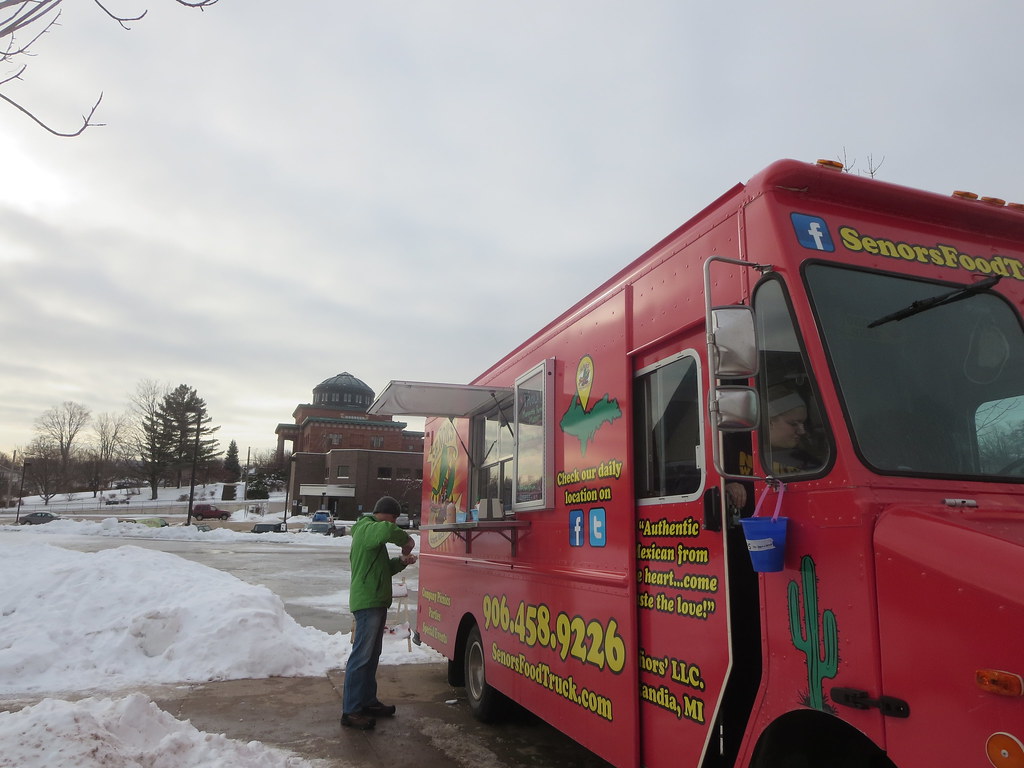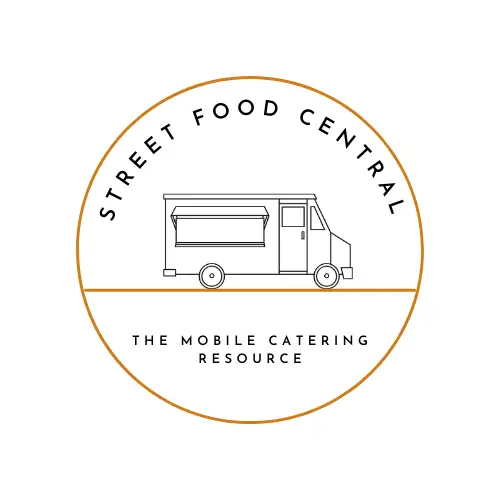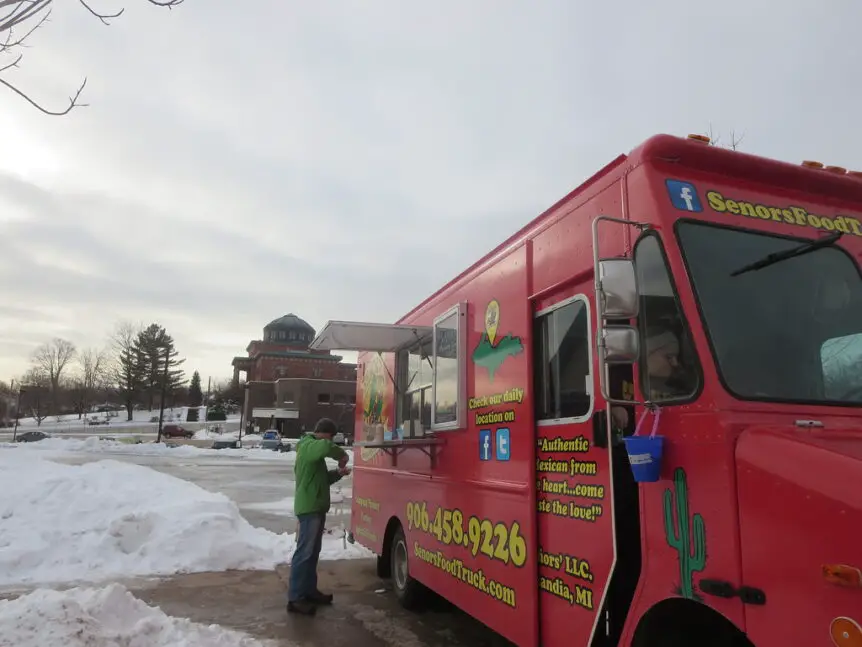See how the seasons & economic cycles affect the food truck industry along with tips for winterizing your food truck

Unlike brick-and-mortar food businesses like restaurants, food trucks do most of their trade at outdoor events such as music festivals and food markets, which means they are more sensitive to income fluctuations as the seasons change.
This is because more events are on over the summer months and people tend to spend longer outdoors and are likely to spend more money on eating out. In comparison, people tend to gravitate indoors as the weather closes in and it gets colder.
Food trucks are definitely seasonal. The best seasons for food trucks are the spring and summer months, between April and September, with June, July, and August being the peak months. The autumn and winter months between October and March tend to be the worst months for food trucks as people gravitate indoors.
However, this is a general picture and there are some nuances to this as the changing seasons will affect some food trucks more than others depending on the type of product sold.
I discuss this in more detail below, along with some other things that can affect the food truck industry and how some businesses winterize their food trucks.
Contents:
1. The seasons
2. Other factors that affect the food truck industry
3. Tips for winterizing food trucks
4. Key takeaways
1. The seasons
Food truck traders sell most of their products outdoors at food events, music festivals, and food markets which means the season does affect how much footfall there is depending on the weather, which has a direct impact on what they can potentially earn. Some traders only trade during the festival seasons whilst others trade all year round
In general, the best seasons for food trucks are the spring and summer months between April and September, with May, June, July, and August being peak months as the weather warms up and people gather outside at festivals and food markets.
The autumn and winter months between October and March on the other hand tend to be the worst months for trade as the summer festival and events seasons come to an end.
However, the season also affects some food truck traders more than others depending on the type of product they sell.
Some food truck traders can go nearly all year round and the months leading up to the winter holidays can in fact be their most lucrative months.
Take for example food traders that sell hog roasts, bratwurst (German sausage), roast dinner wraps, cakes, and hot drinks such as hot chocolate and mulled wine at Xmas markets.
On the other hand, winter is the worst season for traders that sell summer products such as juices, smoothies, and ice creams. These types of food trucks usually pack up trade at the end of the summer/start of Autumn until the following spring.
Related articles:
2. Other factors that affect the food truck industry
There are also a number of other factors that can affect the food truck industry aside from the changing seasons.
Holiday seasons
The holiday season such as bank holidays and summer breaks can be a time when large amounts of people leave a city or large town for holidays abroad or back home.
This can especially affect food truck traders who operate in places where there is a large student population. The city of Bristol where I live for example has 2 large universities and it is noticeably quieter for food traders when the students are gone home for the holidays.
Economic downturns
Like most sections of the economy, the food truck industry is sensitive to economic cycles such as recessions, depressions, and inflationary pressures which result in people cutting back on things like eating out
And despite the great recessions of 2008 being one of the catalysts for the food truck industry becoming more mainstream as people lost their jobs and started working for themselves, the prices for eating at a lot of food trucks have increased significantly since then.
In some cases, the cost of eating out at food trucks, which used to be seen as the cheaper option has doubled and in some cases isn’t much chapter than some sit-down restaurants.
Technological change
As we have seen over the last couple of decades technology has changed a large number of industries. from banking and finance to the way we travel and how we eat.
The rise in food apps such as Delveroo, Uber Eats and Just Eat has made eating at your favorite establishment more convenient as you don’t even need to leave the comfort of your home.
Whilst some food truck traders have adapted as a result of the 2020 pandemic and now offer food delivery on these platforms or their own online delivery systems a large majority of traders have not and still rely on footfall alone.
Related articles:
3. Tips for winterizing food trucks
As discussed winter is the hardest time for the mobile catering industry as sales generally dip in the autumn and winter in relation to the summer months. However, there are a number of things food traders do to winterize their food businesses and keep the income flowing.
Get indoors
One of the best ways food trucks operate all year round is to get indoors over the winter. Places like indoor food markets and private events such as corporate catering and office parties can be a good way to continue trading and get out of the cold
Pop-ups in pubs and music venues are also becoming very popular now for truck tucks as some venues don’t have the catering facilities to offer hot food.
Access Xmas/winter markets
Despite the summer months generally being the best there are still good opportunities over the winter to trade outside. Winter and Christmas markets are very popular where you will see numerous traders selling hog roasts, hotdogs, and mulled wine to large crowds of people.
However, this doesn’t work so well for traders who sell summer products such as ice creams and smoothies.
Add winter products to your menu
Food truck traders who do sell predominantly summer products can also add winter products to their menu to capitalise on the winter market. A juice bar in Spitalfields market, London springs to mind where they sell mulled wine and soup over the winter months.
Start a ghost kitchen & offer delivery
Ghost kitchens are a way to make your product from a commercial or home kitchen instead of from the actual food truck and sell to the public through food delivery apps such as Deliveroo or Uber Eats. This is a good way to reduce some of the ongoing costs food trucks have such as pitch fees over the months when footfall is at its lowest.
Food trucks can also continue to operate from their units but sign up with one of the food delivery platforms and offer food delivery, which is a good way to keep a relationship with existing customers.
Related article
Key Takeaways
The season does affect the food truck industry and influences how much traders earn. This is because more events take place in the summer months which means there is generally more footfall and hence more income in relation to the autumn and winter months
However, some traders do trade all year round and do very well in the winter months at Xmas markets. There are also a few things food trucks can do to winterize their businesses such as trading at indoor events, providing corporate catering, starting ghost kitchens, offering delivery, and adding winter products to their menus.
In short, it’s not a clear-cut picture and if you are just starting out it is good to get an overview of the industry before you choose a product to sell or commit to spending a lot of money on equipment.
Gavin D is the founder of Street Food Central and Tru Foo Juice Bar Co. and has worked in the mobile catering industry for over 7 years.

